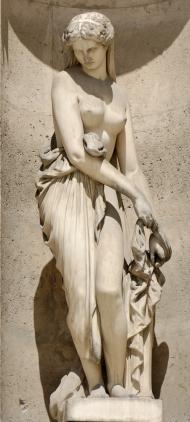Kuka päivitti Campaspe?
Aleksanteri Suuri päivitti Campaspe ?: sta ?.: ään
Campaspe

Campaspe (; Greek: Καμπάσπη, Kampaspē), or Pancaste (; Greek: Παγκάστη, Pankastē; also Pakate), was a supposed mistress of Alexander the Great and a prominent citizen of Larissa in Thessaly. No Campaspe appears in the five major sources for the life of Alexander and the story may be apocryphal. The biographer Robin Lane Fox traces her legend back to the Roman authors Pliny (Natural History), Lucian of Samosata and Aelian's Varia Historia. Aelian surmised that she initiated the young Alexander in love.
According to tradition, she was painted by Apelles, who had the reputation in antiquity for being the greatest of painters. The episode occasioned an apocryphal exchange that was reported in Pliny's Natural History: "Seeing the beauty of the nude portrait, Alexander saw that the artist appreciated Campaspe (and loved her) more than he. And so Alexander kept the portrait, but presented Campaspe to Apelles." Fox describes this bequest as "the most generous gift of any patron and one which would remain a model for patronage and painters on through the Renaissance." Apelles also used Campaspe as a model for his most celebrated painting of Aphrodite "rising out of the sea", the iconic Venus Anadyomene, "wringing her hair, and the falling drops of water formed a transparent silver veil around her form".
Lue lisää...Aleksanteri Suuri

Aleksanteri Suuri eli Aleksanteri III (m.kreik. Ἀλέξανδρος Γ' ὁ Μακεδών, Aléksandros ho Trítos ho Makedōn; noin 20. heinäkuuta 356 eaa. –10. kesäkuuta 323 eaa.) oli Makedonian kuningas 336–323 eaa. Hän oli antiikin merkittävimpiä sotapäälliköitä; hän valloitti muun muassa Egyptin ja Persian valtakunnan ja eteni aina Intiaan asti.
Aleksanterin isä Filippos II yhdisti kreikkalaiset kaupunkivaltiot oman valtansa alle. Filippoksen kuoltua Aleksanteri peri isältään rikkaan valtakunnan ja aikansa parhaiten koulutetun armeijan. Kreikkalaisten kaupunkivaltioiden avustuksella Aleksanteri kukisti Persian kuninkaan Dareios III:n ja valtasi koko Persian valtakunnan. Valloitusretkiensä aikana hän perusti monia uusia kaupunkeja, muun muassa Aleksandrian Egyptiin, ja niihin muutti kreikkalaisia asukkaita. Hän kasvatti armeijaansa muiden kansojen sotilailla sekä kannusti kreikkalaisten ja persialaisten välisiä avioliittoja. Aleksanterin valloitukset aloittivat hellenistisen ajan, jolloin kreikkalainen kulttuuri levisi aina Intiaan ja Egyptiin saakka.
Lue lisää...